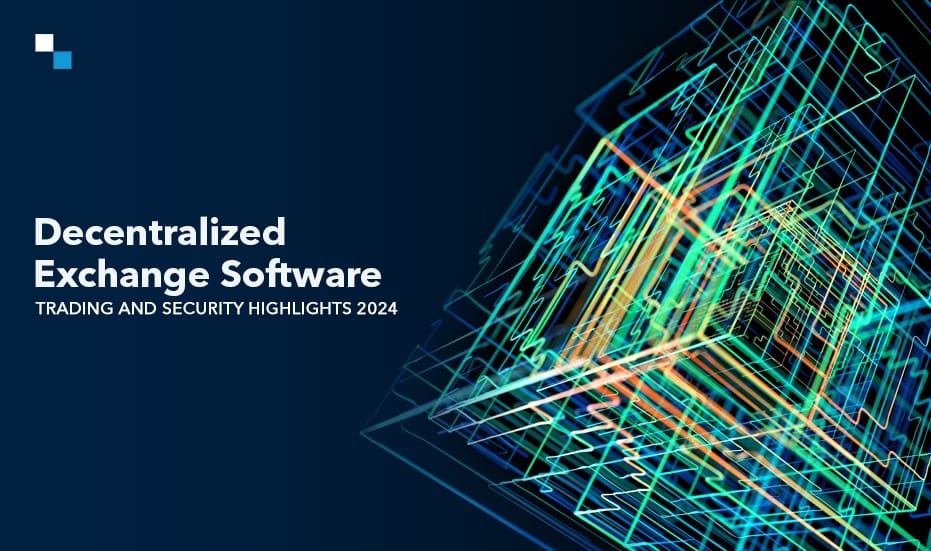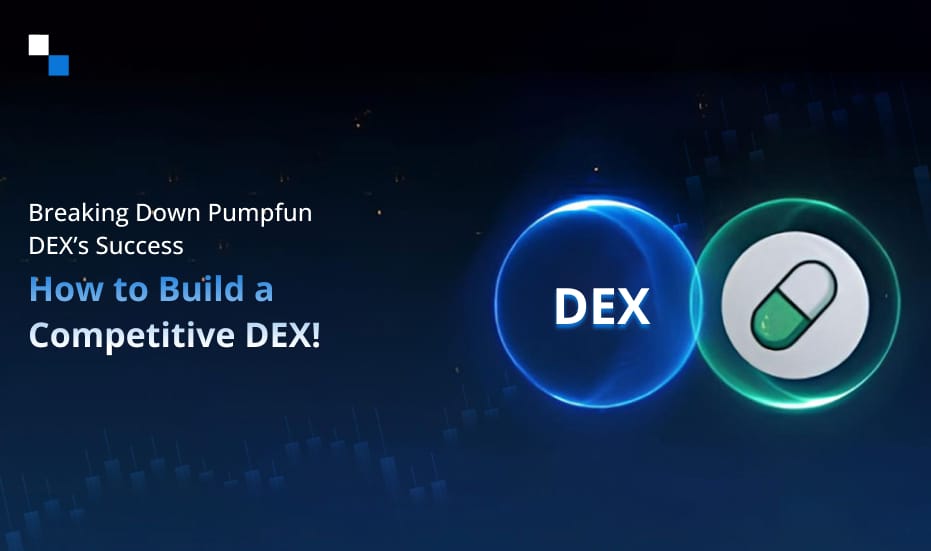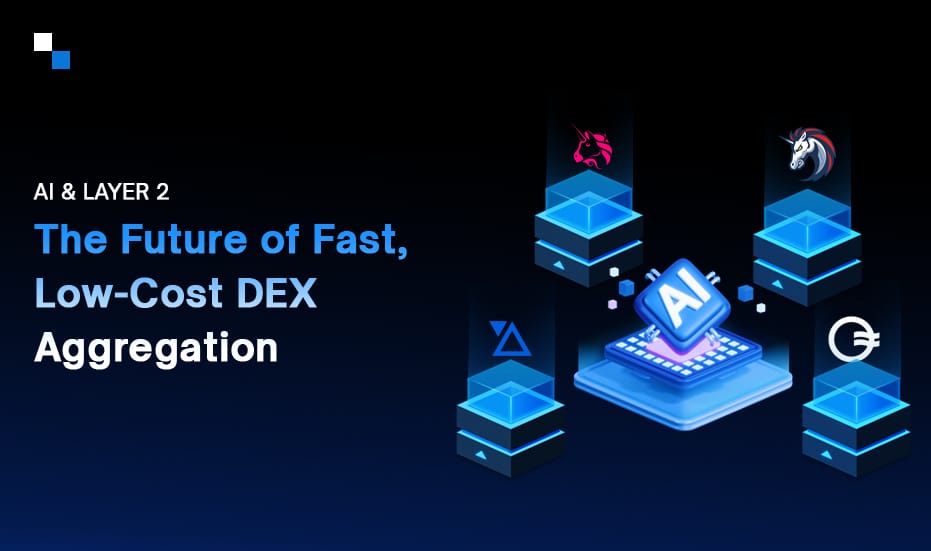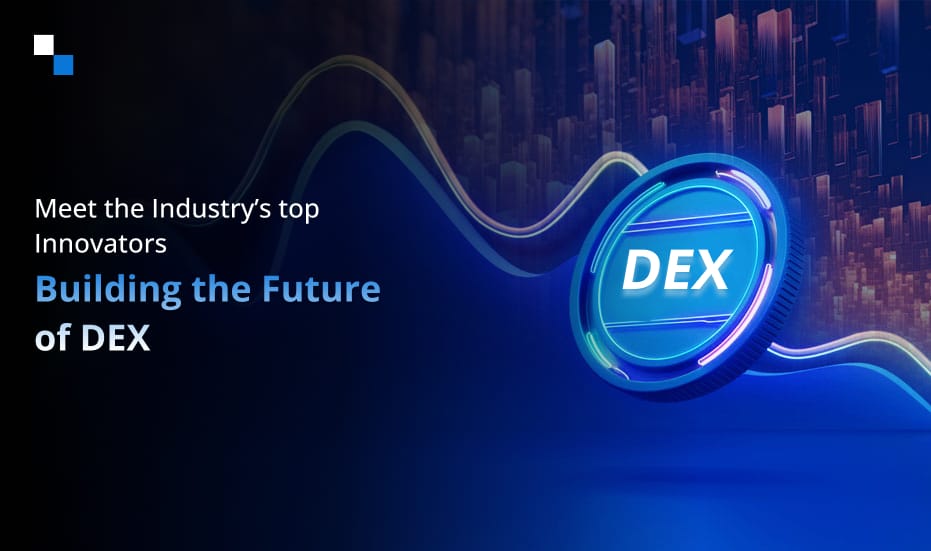
How Is Blockchain In Identity Management A profit Accelerator for Businesses in 2024?
January 18, 2024
Mobile Wallet App Development: Empowering Authority & Freedom
January 18, 2024In the rapidly evolving world of cryptocurrencies, decentralized exchanges (DEXs) play a pivotal role in enabling users to trade digital assets securely and transparently. As we look ahead to 2024, decentralized crypto exchange software must adopt the best trading and security features to ensure a seamless and trustworthy trading experience for its users.
Trading & Security in Decentralized Exchanges
Decentralized exchange development has gained immense popularity among crypto enthusiasts as it ensures the elimination of intermediaries and empowers users with full control over their assets. However, your decentralized exchange software must prioritize trading and security features that safeguard users’ funds and optimize trading experience. It helps to maintain trust and attract a wider user base.
Here are some of the must-have trading features:
- High liquidity pools: Liquidity is a key factor in any exchange, and while developing a decentralized crypto exchange software, one should focus on establishing partnerships with liquidity providers to ensure a robust trading environment. DEXs can prevent slippage and provide competitive trading prices by offering deep liquidity pools.
- Advanced order types: Implementing advanced order types such as limit orders, stop-limit orders, and trailing stop orders can empower users with more control and flexibility in their trading strategies. These features allow users to set specific conditions, minimizing risks and maximizing profits.
- User-friendly interfaces: Simplicity and ease of use are paramount in attracting and retaining users. DEXs should invest in intuitive and user-friendly interfaces that make it easy for both novice and veteran traders to navigate the platform and execute trades seamlessly.
Focus on enhancing security measures
- Secure decentralized infrastructure: DEXs are known to leverage robust blockchain technologies like Ethereum and Polkadot to create a secure decentralized infrastructure Your decentralized exchange software can enhance the security of user funds, and reduce the risk of hacking or fraudulent activities, by utilizing smart contracts and multi-signature wallets.
- Two-factor authentication (2FA): Implementing 2FA should be an essential part of decentralized exchange development as it adds an extra layer of security to user accounts. DEXs can significantly mitigate the risk of unauthorized access and protect users’ funds by making it compulsory for users to verify their identities through an additional authentication method, such as a text message or authentication app.
- Cold storage wallets: Storing the majority of users’ funds in offline cold storage wallets ensures an added layer of protection against hacks or breaches. Decentralized exchange development experts always recommend that DEXs should use a combination of hot and cold wallets to minimize the risk of loss due to cybersecurity threats.
- Regular security audits: Conducting regular security audits is crucial to identify and address any vulnerabilities or weaknesses in a decentralized crypto exchange software infrastructure. These audits should be performed by reputable firms to ensure an unbiased and comprehensive assessment of security measures.
The Future of Decentralized Exchanges: 2024 and Beyond
As we look toward the future of decentralized exchanges in 2024, several emerging trends and developments are poised to revolutionize the landscape further.
Here are a few notable trends to keep an eye on:
- Layer 2 Scaling Solutions: Enhancing Speed and Scalability
One of the primary challenges faced by any decentralized exchange software is the scalability issue. As the number of users and transactions grows, the Ethereum network, on which many DEXs are built, can become congested and slow. Layer 2 scaling solutions, such as state channels and sidechains, offer a promising answer to this challenge.
State channels enable users to conduct off-chain transactions, significantly reducing network congestion and improving transaction speeds. This allows the decentralized crypto exchange software to handle a higher volume of trades without sacrificing performance. In addition, sidechains can alleviate the burden on the main Ethereum network by processing transactions independently and then settling them on the main chain periodically. These Layer 2 solutions hold the key to enhancing the speed and scalability of decentralized exchanges and will shape the future of the ecosystem.
- Cross-Chain Interoperability: Bridging Fragmented Networks
Currently, most Decentralized exchange development firms confine themselves to a single blockchain network. This limits liquidity and trading opportunities for users. However, cross-chain interoperability seeks to overcome this limitation by creating a seamless connection between different blockchain networks.
Blockchains like Polkadot and Cosmos aim to build bridges between disparate blockchains, enabling assets to be transferred and traded across networks. This will unlock a vast range of new trading pairs and liquidity pools, and result in a more vibrant and efficient decentralized exchange ecosystem. As cross-chain interoperability becomes more widespread, decentralized exchange software will be better positioned to challenge the dominance of centralized exchange development.
- Decentralized Identity (DID): Empowering Users
Decentralized identity (DID) is a rapidly evolving field that has the potential to transform how individuals manage their online identities. Traditional decentralized crypto exchange software requires users to trust centralized platforms with their personal information, raising concerns about privacy and security. DID offers a solution by allowing users to maintain control over their identity and personal data.
With the advent of decentralized identity protocols, users can authenticate themselves through cryptographic proofs without relying on centralized authorities. This decentralized approach enhances privacy and security while empowering individuals to manage their digital identities. DEXs that incorporate DID will attract users who value privacy and control over their personal information, further propelling the adoption of decentralized exchanges.
Wrapping it Up
The year 2024 holds immense potential for decentralized exchanges to elevate trading experiences and bolster security measures. You can address trading and security concerns related to your crypto exchange software by adopting the best features like high liquidity pools, advanced order types, and user-friendly interfaces, coupled with 2FA, cold storage wallets, and regular security audits. This way, your decentralized exchange software can solidify its position as the go-to platform for cryptocurrency traders.
Antier can be your partner in shaping the future of your decentralized exchange and brimming it with potential. We focus on the implementation of layer 2 scaling solutions, cross-chain interoperability, and decentralized identity systems. Besides this, the combination of improved scalability, interconnected networks, and user-centric identity mechanisms will solidify the decentralized exchange’s position in the clustered world of DEXs.
This way, your exchange will attract users seeking enhanced security, privacy, and control over their financial transactions.
Connect with us to stay ahead in this exciting era of decentralized finance.



